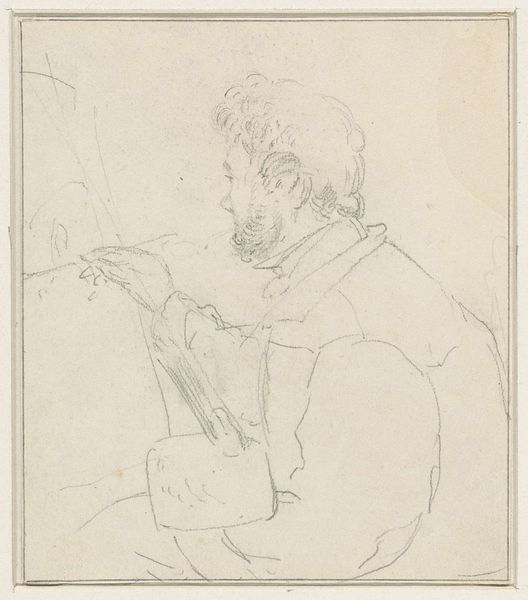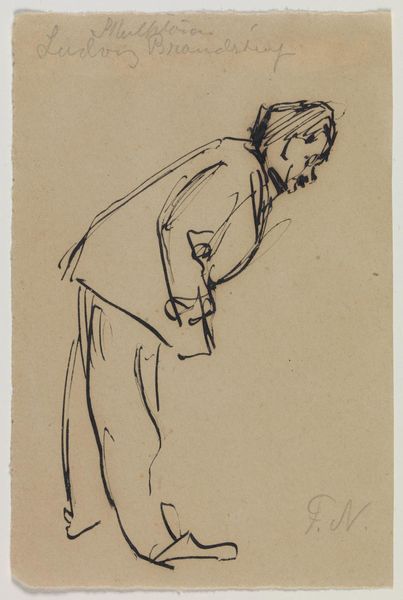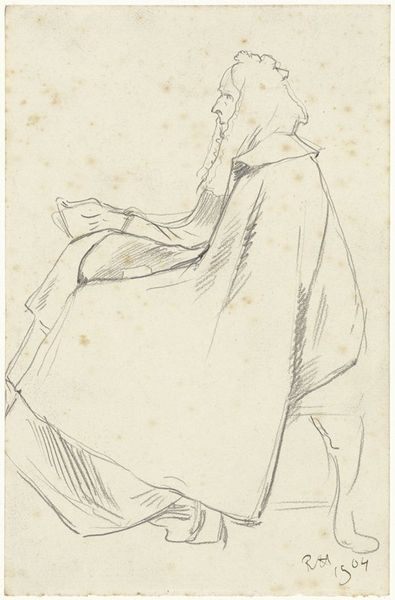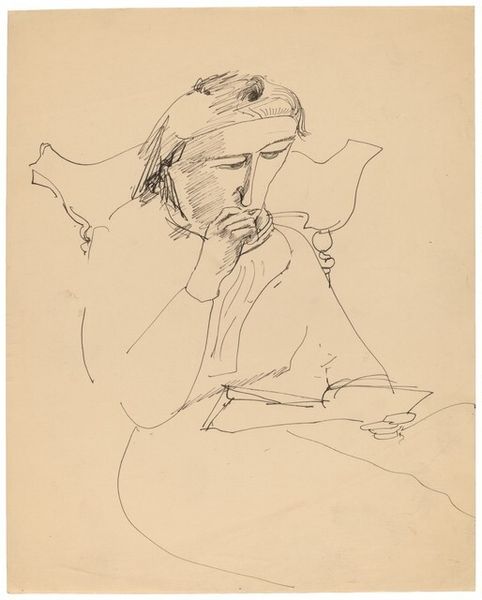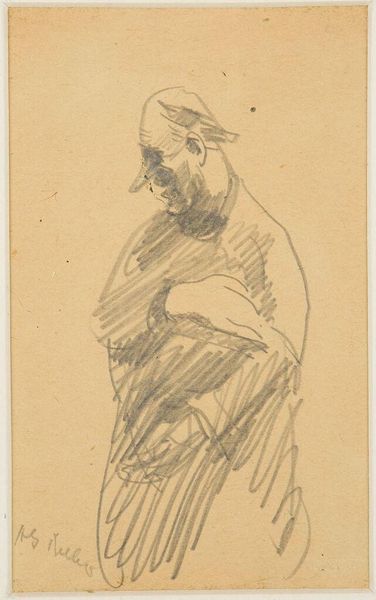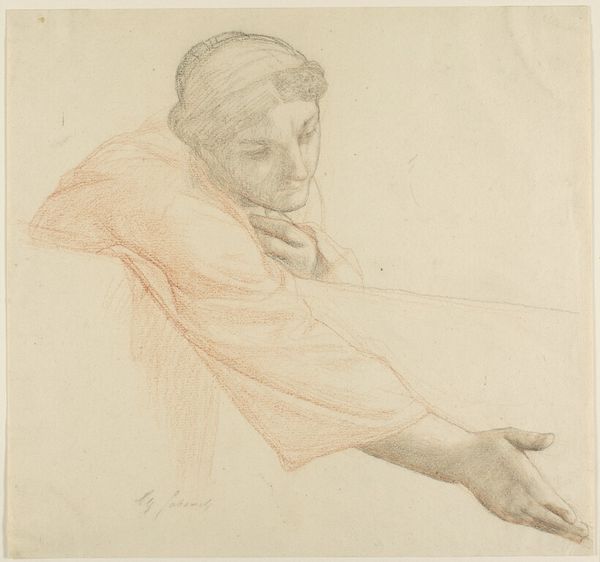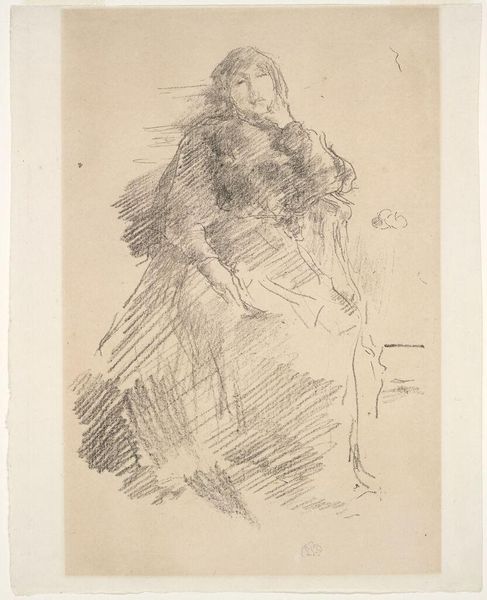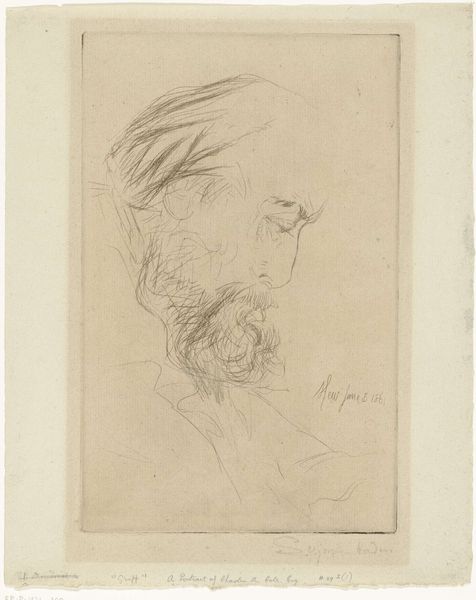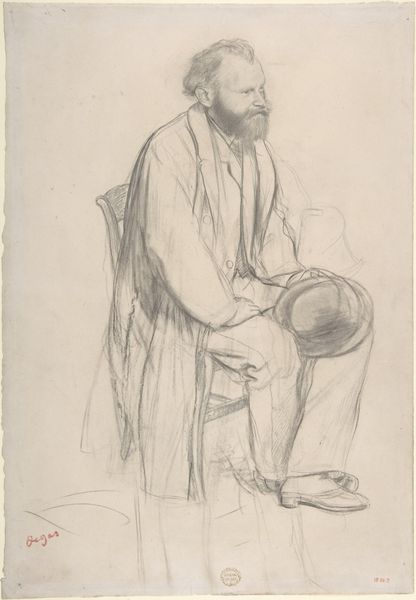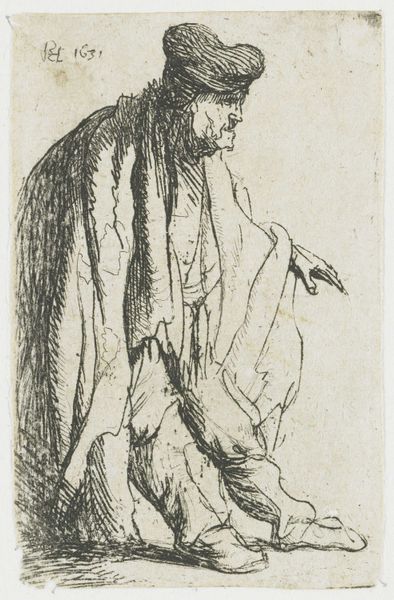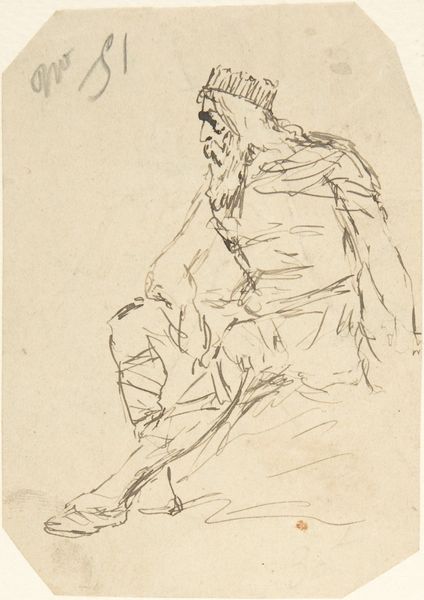
drawing, ink
#
portrait
#
drawing
#
imaginative character sketch
#
light pencil work
#
ink drawing
#
pencil sketch
#
personal sketchbook
#
ink
#
idea generation sketch
#
ink drawing experimentation
#
pen-ink sketch
#
line
#
sketchbook drawing
#
storyboard and sketchbook work
Dimensions: overall: 27.8 x 21.5 cm (10 15/16 x 8 7/16 in.)
Copyright: National Gallery of Art: CC0 1.0
Curator: Let's spend a moment with this delicate line drawing, "Bust-length Portrait of Woman in Profile to Left." It's rendered in ink, an intimate glimpse into the artist's process, isn't it? Editor: Intimate is a perfect word. My first impression is one of quiet observation. The woman's profile, rendered with such spare lines, projects a kind of introspective melancholy. What do you make of the medium used? Curator: Well, working with ink necessitates confidence; there’s little room for correction, implying this might have been sketched quickly or perhaps from life. We see similar sketchbooks of the era documenting the rapidly changing social landscape, reflecting societal concerns. Editor: That spontaneity translates into an incredible dynamism. Look at the contrasting strokes—some firm and decisive outlining the face, others almost ephemeral, suggesting the soft fall of her hair and clothes. It is line as a suggestion of form. Curator: It invites speculation about her station in life, the purpose of such portraits, perhaps records for potential marriage or just demonstrations of a person's elevated education level. The politics of display become very important when such drawings become precious in gallery setting like ours. Editor: You make an excellent point about social status. The almost minimalist approach actually draws greater attention to line and shadow; observe how the artist renders a three-dimensional form, all while avoiding extraneous details, the expressiveness of pure shape. Curator: Indeed. How often did artists use line and shadow to flatten or add perspective to people within a canvas as part of conveying political undertones and/or overtones? I suppose the more pertinent question to ask ourselves is: "How often *do* we question this usage"? Editor: Right, so as formalist, I want to reassert here: note how the sketch relies on implication to fill in the areas and tones. A detail is never overwrought or burdened with its making. How often are our assumptions about wealth or political class really more about how we "read" into or onto someone? The success of any rendering relies less upon its political leanings than how skillfully that translation gets delivered, I think! Curator: Point taken. Thinking about this sketch within its historical context adds another layer, revealing the era's artistic practices and perhaps reflecting subtle social narratives through portraiture. Thank you. Editor: My pleasure. It is quite fascinating how such minimal visual cues can lead us to project meaning and assumptions.
Comments
No comments
Be the first to comment and join the conversation on the ultimate creative platform.

